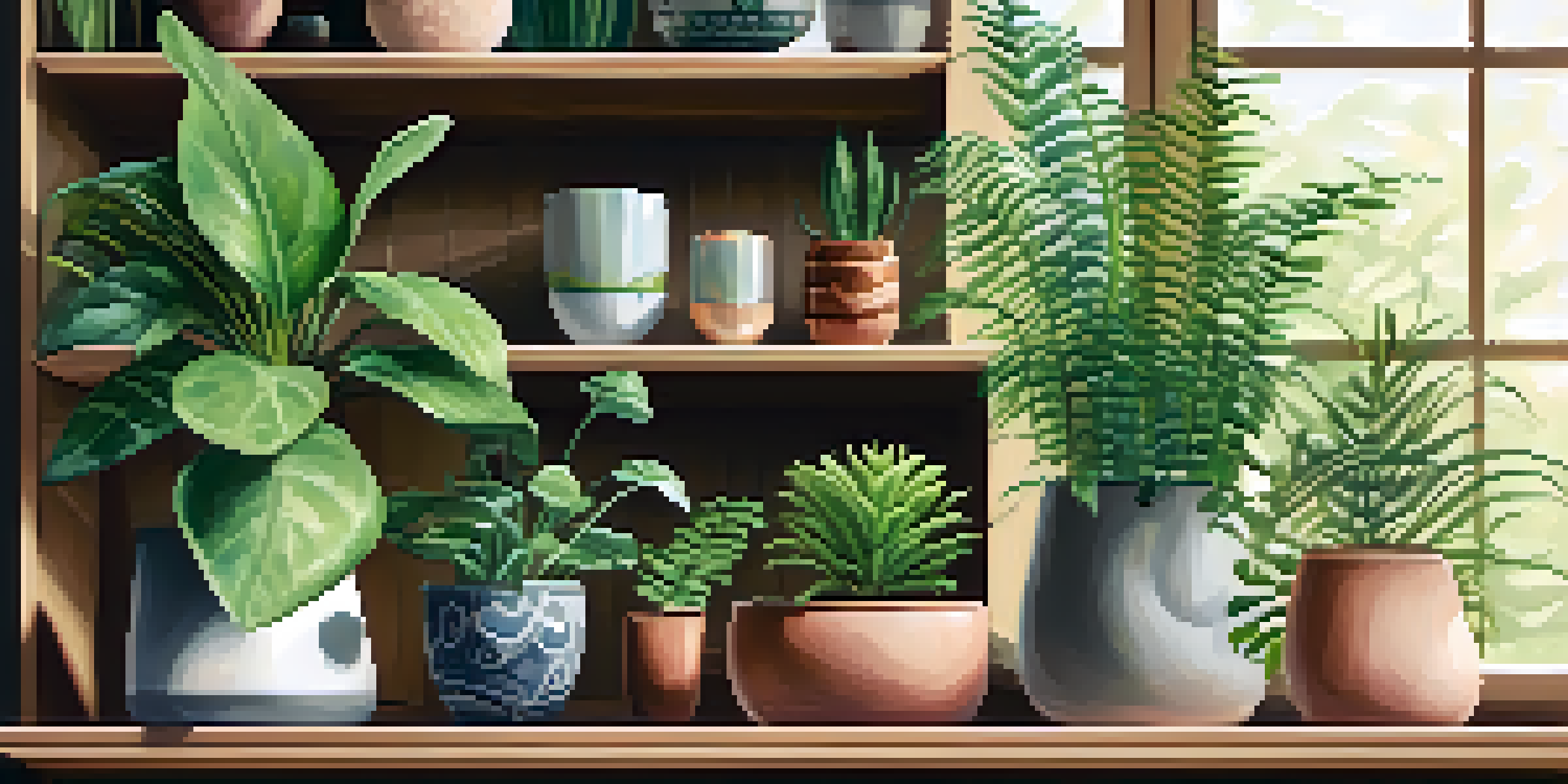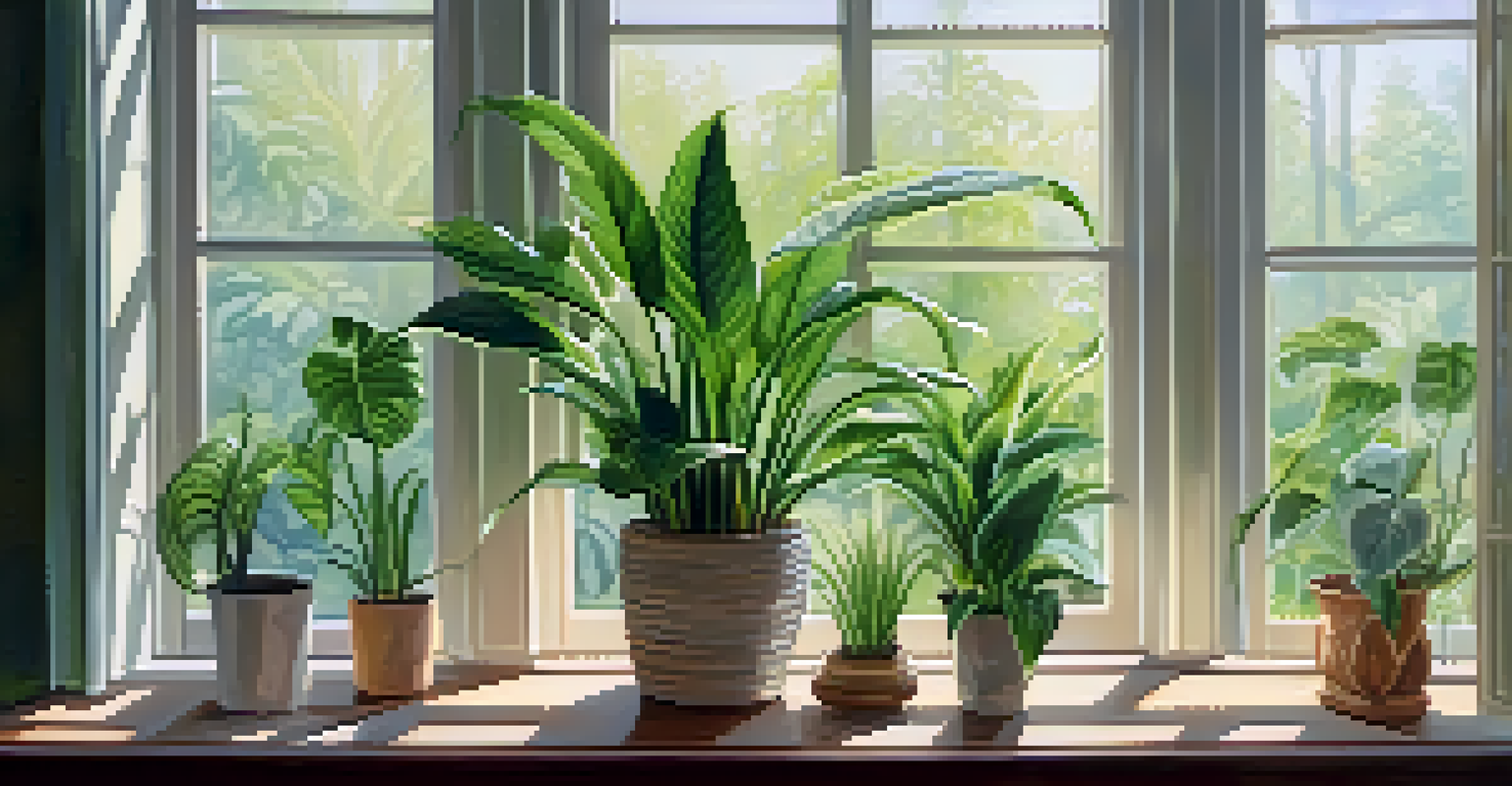Understanding VOCs and How Plants Help Reduce Them

What Are VOCs and Why Should We Care?
Volatile Organic Compounds, or VOCs, are organic chemicals that easily evaporate at room temperature. They are found in many household products, such as paints, cleaning supplies, and even air fresheners. Despite their usefulness, VOCs can contribute to air pollution and cause health issues, making it essential to understand their impact on our environment and well-being.
The greatest threat to our planet is the belief that someone else will save it.
When VOCs are released into the air, they can lead to respiratory problems, headaches, and even long-term health effects. This is particularly concerning for vulnerable populations like children and the elderly. By being aware of VOCs and their sources, we can take steps to minimize exposure and protect our health.
In our quest for cleaner air, many people overlook natural solutions. One effective way to reduce VOCs indoors is by incorporating houseplants into our living spaces. Not only do they beautify our homes, but they can also play a crucial role in improving indoor air quality.
Common Sources of VOCs in Our Homes
VOCs are often emitted from everyday household items, which can surprise many. Common culprits include paints, varnishes, disinfectants, and even personal care products like perfumes and lotions. It’s not just industrial spaces that are at risk; many of us unknowingly invite VOCs into our homes.

For instance, when you open a new can of paint or a bottle of cleaning solution, you might notice a strong smell. That scent is often a sign of VOCs being released into the air. Even new furniture can emit VOCs due to off-gassing, where materials release chemicals into the air over time.
VOCs Impact Health and Environment
Volatile Organic Compounds (VOCs) can cause health issues like respiratory problems and contribute to air pollution, making awareness essential.
Being mindful of these sources can help us make informed choices. Opting for low-VOC or VOC-free products can significantly reduce the level of these compounds in your home, contributing to a healthier living environment.
How Plants Naturally Absorb VOCs
Plants are remarkable organisms that not only beautify our surroundings but also have a unique ability to absorb VOCs. Through a process called phytoremediation, certain plants can take in these harmful compounds and convert them into harmless substances. This natural process showcases the incredible synergy between nature and our health.
Plants give us oxygen for the lungs and for the soul.
The leaves of plants play a crucial role in this absorption. They can trap VOCs on their surfaces and then help break them down or store them safely. Some studies have shown that common houseplants, like spider plants and peace lilies, can significantly reduce indoor VOC levels, making them fantastic companions for any home.
Incorporating a few of these plants into your living space can serve dual purposes: enhancing the aesthetic appeal while also purifying the air. It's an effortless way to create a healthier environment for you and your loved ones.
Top Houseplants for Reducing VOCs
When it comes to selecting plants that can effectively reduce VOCs, not all are created equal. Some plants have been studied more extensively and have proven to be particularly effective at filtering specific VOCs. For example, the snake plant is known for its ability to absorb formaldehyde, a common indoor pollutant.
Another excellent choice is the rubber plant, which can tackle chemicals like benzene and trichloroethylene. Additionally, the Boston fern is great for removing xylene and toluene from the air, making it a popular choice for improving indoor air quality.
Plants Improve Indoor Air Quality
Certain houseplants, such as spider plants and rubber plants, naturally absorb VOCs, helping to purify the air in our homes.
By strategically placing these plants around your home, you can create a natural air filtration system that works continuously. Not only does this help improve air quality, but it can also enhance your mood and overall well-being, as being around greenery has been linked to reduced stress.
Best Practices for Caring for Indoor Plants
To ensure your houseplants thrive and continue to purify the air, it’s essential to understand their care requirements. Most indoor plants prefer indirect sunlight, so placing them near a window with filtered light is often ideal. Overexposure to direct sunlight can scorch their leaves, while too little light can stunt their growth.
Watering is another critical aspect to consider. Each plant has different moisture needs, so it’s important to research and stick to a watering schedule. Overwatering can lead to root rot, while underwatering can cause stress and wilting.
Finally, don’t forget to clean the leaves regularly to remove dust and debris. This allows the plants to absorb more light and continue their air-purifying process effectively. A little care goes a long way in keeping your indoor jungle healthy and functional!
Creating a Healthy Indoor Environment
While adding plants is a fantastic start, creating a healthy indoor environment involves more than just greenery. Regular ventilation is crucial; opening windows when weather permits allows fresh air to circulate, reducing the concentration of VOCs indoors. This simple step can significantly improve the air quality in your home.
Another important aspect is to be mindful of the products you bring into your space. Opting for environmentally friendly and low-VOC products can help minimize your exposure to harmful chemicals. This includes everything from cleaning supplies to furniture and paint choices.
Care Practices for Healthy Plants
Proper care, including appropriate light and watering, ensures houseplants thrive and effectively contribute to indoor air purification.
Combining these practices with your indoor garden creates a holistic approach to air quality. By making conscious choices, you can turn your home into a sanctuary that prioritizes both comfort and health.
The Future of Indoor Air Quality and Plants
The conversation around indoor air quality is evolving, and the role of plants in this dynamic is gaining recognition. As more people become aware of the detrimental effects of VOCs, incorporating greenery into our spaces is becoming more commonplace. Research continues to highlight the benefits of plants, paving the way for more innovative solutions in air purification.
Moreover, the trend of biophilic design, which focuses on incorporating nature into our built environments, is on the rise. This design philosophy not only emphasizes the aesthetic value of plants but also their practical benefits in improving air quality and enhancing overall well-being.

Looking ahead, we can anticipate a greater integration of plants into homes and workplaces. As we continue to learn about the positive impacts of natural elements on our health, the future of indoor air quality will likely see a blend of technology and nature working in harmony.